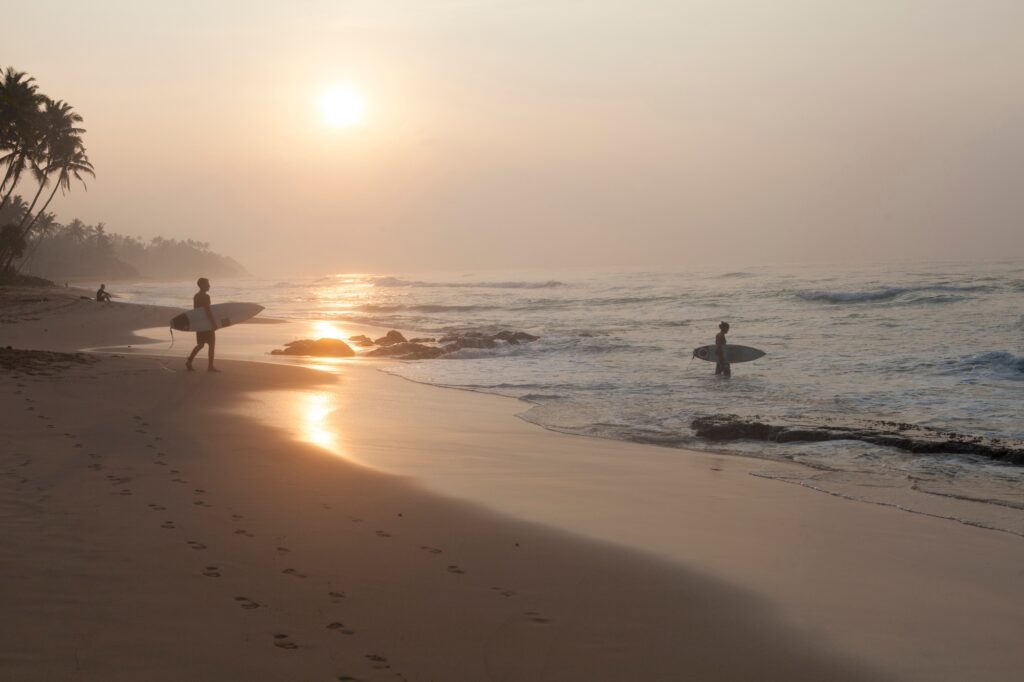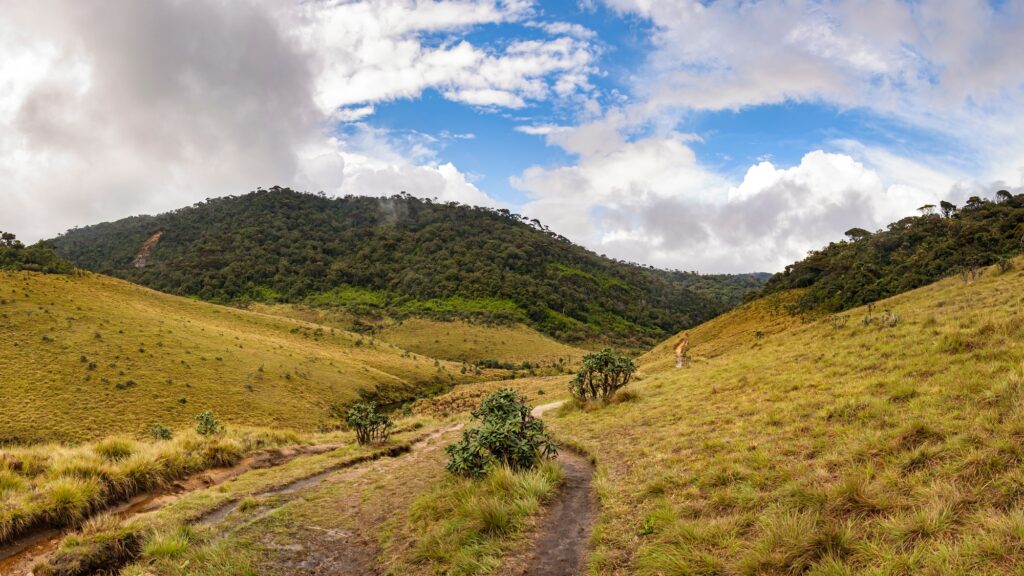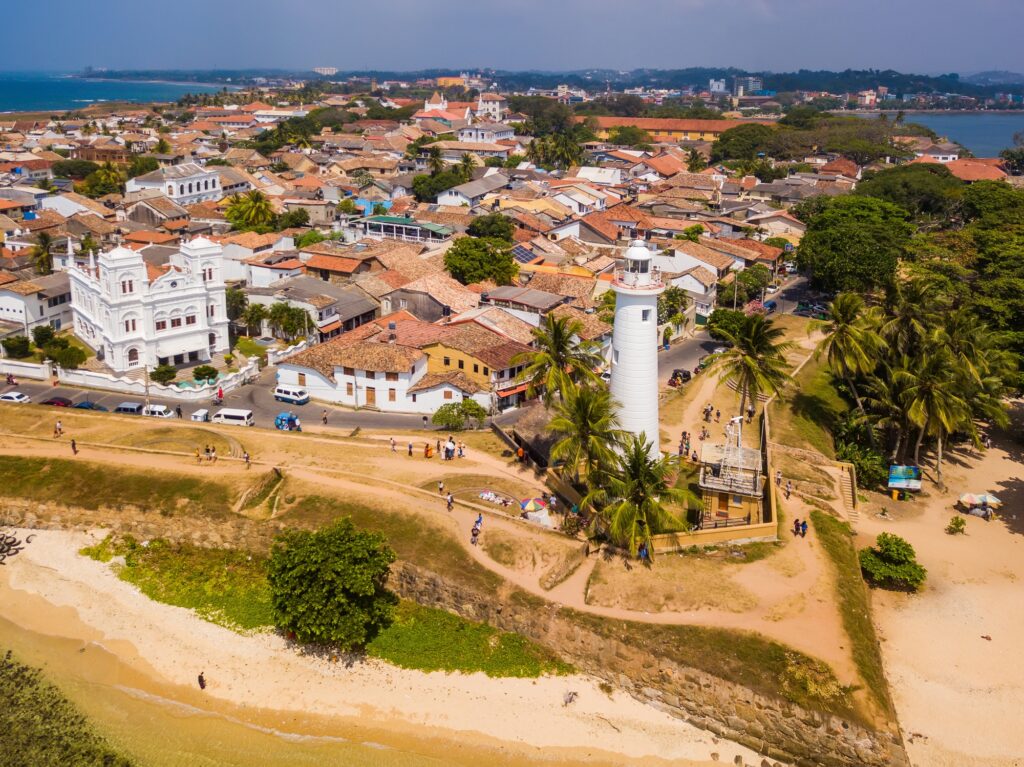Introduction to Yala National Park
Yala National Park, one of Sri Lanka’s most celebrated wildlife reserves, is remarkably positioned in the southeastern region of the country, spanning both the Hambantota and Monaragala districts. Covering an area of approximately 979 square kilometers, this extensive park is an emblem of biodiversity, drawing wildlife enthusiasts and nature lovers from around the globe. Established in 1900 as a wildlife sanctuary, it was later designated as a national park in 1938. Since then, Yala has become renowned for its efforts in wildlife conservation and its multifaceted ecosystems, including dry monsoon forests, scrubland, and wetlands.
The significance of Yala National Park lies not only in its size but also in the rich variety of flora and fauna it supports. Home to an impressive array of species, the park is particularly famous for its population of leopards. It is widely regarded as one of the best places in the world to observe these elusive big cats in their natural habitat. Furthermore, Yala boasts a diverse range of wildlife, from elephants and crocodiles to numerous bird species, making it a paradise for photographers and researchers alike.
In addition to its wildlife significance, Yala National Park also holds a rich cultural history. Dotting the landscape are remnants of ancient temples and relics that reflect the area’s long-standing connection with Sri Lankan civilization. These features underline the importance of Yala not only as a natural haven but also as a site of historical and cultural interest.
In essence, Yala National Park represents a vital component of Sri Lanka’s natural heritage, encapsulating the diverse ecosystems and extraordinary wildlife that the island has to offer. This intricate balance of nature and history establishes Yala as an essential destination for anyone seeking to explore the wild heart of Sri Lanka.
Biodiversity of Yala National Park
Yala National Park, situated in the southeastern region of Sri Lanka, is renowned for its remarkable biodiversity. Covering an area of approximately 978 square kilometers, the park is home to a varied assemblage of flora and fauna. Its diverse ecosystems range from grasslands and scrublands to forests and wetlands, providing habitats for an array of species. Among the park’s most iconic inhabitants is the Sri Lankan leopard, a subspecies endemic to the island and known for its elusive behavior. Yala is one of the world’s best places to observe these majestic creatures in their natural environment.
In addition to leopards, Yala National Park boasts a significant population of Asian elephants. These gentle giants can frequently be seen roaming the park, offering visitors a unique opportunity to witness their social interactions in the wild. The park’s diverse habitats also support numerous other mammals, including spotted deer, wild boar, and various primate species. Acknowledging the ecological importance of these species highlights the need for ongoing conservation efforts.
Moreover, Yala is a paradise for birdwatchers, with approximately 215 recorded bird species. Notable avian residents include the critically endangered Sri Lankan junglefowl and the Eurasian spoonbill. Many migratory birds also visit during certain seasons, enhancing the park’s avifauna diversity. The presence of endemic species further emphasizes Yala’s significance as a biodiversity hotspot, underscoring the urgent need to protect its unique ecosystems.
The park’s biodiversity contributes not only to its ecological balance but also to the livelihoods of local communities involved in ecotourism. Efforts to promote awareness about conservation can help preserve this precious natural resource, ensuring that future generations will continue to experience the wonders of Yala National Park and its rich biodiversity.
Best Time to Visit Yala National Park
Yala National Park, renowned for its diverse ecosystems and rich wildlife, offers unique experiences depending on the time of year visitors choose to explore its wonders. The optimal time to visit the park largely revolves around weather conditions and animal behaviors, particularly during the dry season from February to July. During this period, the decreased rainfall leads to clearer visibility and increased animal activity, making it easier for visitors to spot elusive species, including the iconic Sri Lankan leopard.
In contrast, the monsoon season, which typically occurs from May to August, may deter some tourists due to heavy rains and swelling rivers. However, for wildlife enthusiasts, this time can provide breathtaking landscapes and a different range of animal interactions. The park’s flora flourishes during this period, attracting various bird species and nurturing vital ecosystems. Visitors should also note that the park may be less crowded during the off-peak season, allowing for a more serene exploration of its natural beauty.
Furthermore, factors such as the availability of food and water influence the movement of animals within the park. Monsoon rains can lead to temporary migrations as animals seek out these essential resources. Therefore, planning a visit during the onset of the dry season can enhance the chances of encountering diverse wildlife in their natural habitats. Understanding the seasonal variations and their impacts is crucial for optimizing wildlife viewing experiences in Yala National Park. Ultimately, careful consideration of these elements will ensure that travelers make informed decisions when scheduling their visit, thus enhancing their adventure in this breathtaking destination.
Wildlife Safaris: An Unforgettable Experience
Yala National Park, renowned for its rich biodiversity, offers a variety of safari options that cater to every type of adventure seeker. Among the most popular choices are jeep safaris, which allow visitors to traverse the park’s diverse terrain in comfort and style. These guided excursions are typically led by experienced drivers familiar with the park’s wildlife habits, ensuring that guests have the best chance of spotting the elusive Sri Lankan leopard, among other inhabitants such as elephants, sloth bears, and numerous bird species. Each jeep safari offers a unique perspective, maximizing opportunities for wildlife observation and photography.
For those who prefer a more intimate experience with nature, guided walking tours provide a different insight into the park’s ecosystem. Accompanied by knowledgeable guides, visitors can engage with Yala’s flora and fauna on a personal level, exploring the microhabitats that jeeps often bypass. This option not only enhances one’s appreciation of the park but also enhances the likelihood of observing smaller creatures that are easily overlooked from a vehicle.
Regardless of the safari option selected, capturing the essence of Yala National Park through photography is a highlight for many. It is beneficial for photographers to arrive early in the day or during golden hours to take advantage of the soft lighting that enhances wildlife images. Additionally, maintaining a respectful distance from animals and avoiding flash photography can greatly improve the experience for both visitors and wildlife alike.
Cultural Heritage and Local Communities
Nestled in the mesmerizing landscape of Sri Lanka, Yala National Park is not only renowned for its rich biodiversity but also for its vibrant cultural heritage and the communities that thrive in its vicinity. The area surrounding the park is steeped in history and tradition, offering a unique glimpse into the local way of life. One significant historical site nearby is the ancient temple of Sithulpawwa, which dates back to the 2nd century BC. This sacred site holds immense religious significance for the local Buddhists and is adorned with ancient rock carvings and statues, reflecting the artistic prowess of early Sri Lankan civilization.
The traditional practices of the local communities exhibit a deep respect for the natural environment. Many residents engage in age-old agricultural methods, often utilizing sustainable techniques that harmonize with the ecosystem. This ethos extends to their interactions with wildlife as well. Various local customs celebrate the rich fauna of Yala, with festivals that honor animals considered sacred, further embedding conservation into their cultural fabric. Wild elephants, leopards, and a plethora of birds often feature in local folklore, strengthening the bond between the communities and their natural surroundings.
Culinary traditions also play a crucial role in these communities, where local cuisine is profoundly influenced by the biodiversity of the region. Dishes often incorporate fresh, locally sourced ingredients, including fish from the coastal areas, coconuts, and a variety of spices and herbs. These culinary practices not only provide nourishment but also create a culinary identity that is deeply connected to the land and its resources.
Thus, the relationship between the local communities and Yala National Park is one of mutual respect and coexistence. The communities demonstrate a commitment to preserving their heritage as well as the natural world, ensuring that the park remains a sanctuary for wildlife while fostering a sustainable lifestyle that honors both culture and conservation.
Conservation Efforts and Challenges
Yala National Park, renowned for its diverse wildlife and stunning landscapes, not only serves as a sanctuary for various species but also faces significant challenges in conservation efforts. Habitat loss, primarily driven by agricultural expansion and human settlements, has led to a gradual diminishment of the natural environment. The encroachment into vital habitats puts additional pressure on the park’s ecosystem, affecting the delicate balance that is crucial for the survival of numerous species.
Poaching poses another substantial threat to the wildlife within Yala National Park. Despite the park’s protective measures, illegal hunting persists, particularly targeting large mammals such as elephants and leopards. These actions not only threaten individual species but also jeopardize the biodiversity that Yala is recognized for. To combat poaching, various governmental and non-governmental organizations have stepped in, implementing strict anti-poaching regulations and conducting awareness campaigns aimed at local communities.
Human-wildlife conflict has emerged as a critical issue as well, often resulting from habitat encroachment where animals venture into nearby human settlements in search of food. This conflict leads to negative interactions, sometimes resulting in harm to both wildlife and human populations. Conservationists are actively working on strategies to mitigate these conflicts. Initiatives include establishing wildlife corridors, educating communities about coexisting with wildlife, and promoting sustainable agricultural practices that deter wildlife from entering cultivated areas.
Efforts from the Sri Lankan government, in collaboration with international conservation groups, have focused on strengthening management policies and enhancing law enforcement within the park. Ongoing research and the use of technology, such as remote sensing and wildlife tracking, are also proving beneficial for monitoring wildlife populations and detecting illegal activities. Overcoming these challenges is critical to ensuring that Yala National Park continues to thrive and serve as a vital habitat for Sri Lanka’s unique flora and fauna.
Accommodations and Travel Tips
When planning a visit to Yala National Park, securing appropriate accommodations is crucial for a comfortable stay. The options range from luxury resorts to budget-friendly hostels, catering to various preferences and budgets. Within Yala National Park, premium resorts offer opulent experiences, featuring lavish rooms, exquisite dining, and personalized safari services. For those seeking a more rustic approach, eco-lodges present an immersive experience closer to nature, allowing guests to enjoy the allure of the wilderness while maintaining comfort.
In the surrounding areas, several guesthouses and budget hostels provide affordable lodging options. These facilities often provide essential amenities, and their proximity to the park ensures easy access for early morning safari tours. It is advisable to book accommodations in advance, especially during peak tourist seasons, when availability may be limited.
Transportation to Yala National Park can be arranged via various means. Travelers can opt for hired cars or take advantage of local transportation services, which include buses and tuk-tuks. When deciding on transportation, consider the distance from your accommodation to the park entrance, as well as schedules for safari tours. Most lodgings offer package deals which include guided safari tours, making it more convenient for visitors to explore the park.
Before embarking on your wildlife adventure, packing essential items is paramount. A durable pair of binoculars will enhance your wildlife viewing experience, while a good camera is vital for capturing the breathtaking landscapes and diverse fauna. In addition, remember to bring comfortable clothing suitable for varying temperatures, sunscreen, insect repellent, and sufficient hydration. Proper planning ensures that your journey into the wild heart of Sri Lanka remains unforgettable and enjoyable.
What to Expect: Flora and Fauna Highlights
Yala National Park, renowned for its diverse ecosystems, offers visitors a remarkable glimpse into Sri Lanka’s rich natural heritage. Visitors can expect to encounter an array of flora and fauna, making each expedition a unique experience. The park is home to several distinct habitats, including scrubland, grasslands, and lagoons, which support a rich tapestry of wildlife.
One of the standout features of Yala National Park is its impressive variety of flora. The park boasts a mix of dry and evergreen forests, along with coastal wetlands. This combination of environments gives rise to a unique collection of plant species, such as the iconic palu (Manilkara hexandra) and the oceanic mangroves that line the coastal areas. The vibrant wildflowers, including several species of orchids, also add splashes of color, enhancing the park’s beauty. As visitors traverse the park, they will appreciate the striking landscapes that define this part of Sri Lanka.
When it comes to fauna, Yala National Park is particularly famous for its high density of leopards, a species that has captivated wildlife enthusiasts. Sightings of these elusive creatures are a major draw for photographers and nature lovers alike. In addition to leopards, the park is home to a variety of mammals, including elephants, sloth bears, and numerous deer species. Birdwatchers will find themselves in paradise, with over 200 recorded bird species, including the majestic peacock and numerous migratory birds that grace the park during seasonal changes.
Visitors are encouraged to remain vigilant, as the park is teeming with life. Alongside the larger mammals and birds, smaller creatures, such as reptiles and amphibians, contribute to the rich biodiversity. Exploring Yala National Park allows guests to witness this remarkable interplay of flora and fauna, encapsulating the essence of Sri Lanka’s wild heart.
Conclusion: The Allure of Yala National Park
Yala National Park stands as a testament to the rich biodiversity and breathtaking landscapes that Sri Lanka has to offer. As we have explored throughout this blog post, the park is renowned for its diverse wildlife, including the elusive leopards, elephants, and myriad bird species that call this sanctuary home. The park’s varied ecosystems, from lush forests to sweeping grasslands, provide a unique backdrop for nature lovers and adventure seekers alike.
Visiting Yala National Park offers an unparalleled opportunity to connect with nature and witness the majestic creatures in their natural habitat. This experience is often described as a transformative journey, allowing individuals to appreciate the beauty of wildlife while understanding the significance of ecological balance. As one traverses the park’s rugged terrain, the thrill of sighting a leopard lounging in a tree or an elephant roaming freely adds to the allure of Yala National Park.
Moreover, it is crucial to recognize the importance of conservation efforts in protecting these irreplaceable ecosystems. Sustainable tourism practices not only enhance visitor experiences but also contribute to the safeguarding of the park’s natural heritage for future generations. Every ticket purchased, every guided safari undertaken plays a role in funding conservation initiatives that ensure the well-being of the park’s inhabitants. By choosing to explore Yala National Park, visitors actively participate in the preservation of its remarkable environment.
In conclusion, Yala National Park is more than just a destination; it is a captivating experience that instills a deep appreciation for nature’s wonders. It beckons every traveler to immerse themselves in the wild heart of Sri Lanka, making it an essential stop for those seeking adventure and a connection with the natural world. Whether you are a seasoned traveler or a first-time visitor, the call of Yala National Park is one that echoes in the soul of every nature enthusiast.





